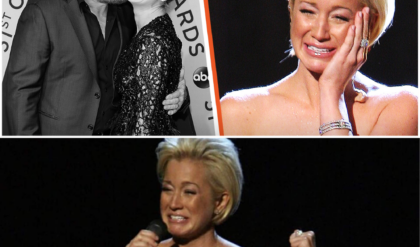Main Content
In the sun-baked sprawl of Camp Pendleton, where the roar of Marine drills mingles with the salty whisper of the Pacific, NCIS: Origins dives headlong into the formative fires that forged one of television’s most iconic investigators. This gripping prequel series, the sixth chapter in the sprawling NCIS franchise, catapults viewers back to 1991, a turbulent era of post-Cold War recalibrations and institutional growing pains. Created by showrunners David J. North and Gina Lucita Monreal, the series chronicles the early exploits of a raw, grief-stricken Leroy Jethro Gibbs as he steps from the shadows of Marine boot camp into the uncharted waters of the Naval Investigative Service (NIS)—the scrappy precursor to the polished NCIS machine. Premiering on CBS in October 2024 to robust ratings and fervent fan acclaim, Origins has since been renewed for a second season, blending procedural precision with psychological depth to unpack the man behind the rules, the Marine behind the badge.
The narrative core pulses with Gibbs’ dual odyssey: professional baptism by fire and personal reckoning with unimaginable loss. Fresh off a stateside discharge, the 30-something Gibbs—haunted by the unsolved murders of his wife Shannon and daughter Kelly at the hands of a drug lord named Pedro Hernandez—channels his rage into NIS fieldwork. Stationed at the Pendleton outpost, he joins a ragtag team under the grizzled tutelage of Special Agent Mike Franks, tackling cases that test his instincts and temper in equal measure. From sniper ambushes on foggy training grounds to black-market arms deals festering in San Diego’s underbelly, each investigation serves as a crucible, honing Gibbs’ unorthodox methods while exposing the era’s bureaucratic snarls and inter-agency turf wars. The show’s episodic structure—22 taut installments per season, clocking in at 42 minutes apiece—delivers self-contained thrills laced with serialized threads, like the Hernandez vendetta that simmers beneath the surface, threatening to consume Gibbs’ fragile composure.
What elevates Origins beyond standard origin tales is its unflinching gaze at trauma’s long shadow. Narrated by the elder Gibbs in voiceovers that crackle with weathered wisdom, the series intercuts ’90s grit with fleeting present-day vignettes, teasing the evolution from probationary hothead to silver-haired legend. Production design captures the analog authenticity: clunky pagers buzzing amid rotary phones, case files yellowing in manila folders, and Pendleton’s dusty barracks standing in stark contrast to the gleaming NCIS headquarters of later years. Cinematographer Anthony B. Richmond bathes scenes in a desaturated palette—ochre sunsets bleeding into bruised twilight skies—mirroring Gibbs’ internal monochrome. The score, a brooding fusion of orchestral swells and twangy guitar riffs by composer Steve Jablonsky, underscores the tension between duty’s rhythm and despair’s dirge.
Season one’s arc builds methodically, opening with a double-episode gut-punch: Gibbs’ first day spirals into a high-stakes pursuit of a rogue operative tied to a base bombing, forcing him to confront not just external threats but his own rule-bending impulses. Midseason pivots to ensemble dynamics, as the team unravels a conspiracy involving counterfeit Navy scrip and a whistleblower’s watery grave off Coronado Beach, revealing fractures in Franks’ ironclad facade. The finale detonates with a Hernandez lead gone lethal, stranding Gibbs in a moral quagmire that echoes his foundational losses. Critically, Origins has earned a 92% Rotten Tomatoes fresh rating, lauded for its “visceral authenticity” and refusal to sanitize the ’90s spy game’s ethical ambiguities. Fans, too, have rallied, with social media ablaze over callbacks to Gibbs’ carpentry hobby—early episodes show him hammering together a makeshift evidence board, a solitary ritual that hints at the basement boat-building therapy to come.
The series’ timeliness shines in its exploration of institutional evolution: the NIS’s pre-digital sleuthing—relying on gut checks, greasy informants, and endless stakeout coffees—contrasts sharply with modern forensics, underscoring how Gibbs’ “headslap” school of leadership was born from necessity, not nostalgia. Guest arcs pepper the run, from a young Tobias Fornell clashing with Gibbs over jurisdiction to fleeting glimpses of future flames like real estate agent Diane, whose flirtations plant seeds of Gibbs’ tumultuous marital history. Filmed on location in Southern California’s sun-scorched expanses, Origins exudes a lived-in verisimilitude, with stunt coordinators drawing from declassified NIS manuals for authentic takedowns.
As Origins sails into season two, the November 11, 2025, crossover event with flagship NCIS promises a seismic bridge across timelines. Airing as a Veterans Day special—Origins at 8 p.m., NCIS at 9 p.m.—the two-parter, titled “Funny How Time Slips Away” and “Now and Then,” hinges on a cold case crack: a naval officer’s mysterious death in the dusty hamlet of Serenity, California. What begins as a ’90s probe into small-town secrets—uncooperative sheriffs, buried grudges, and a web of resident whispers—reverberates into the present, when a prison break by a near-paroled inmate forces the current NCIS squad to dust off the files. This “decades-spanning mystery” not only spotlights Gibbs’ rookie grit but invites reflection on justice’s long arc, where yesterday’s loose ends snag tomorrow’s truths. In a franchise fatigued by spin-off sprawl, NCIS: Origins reinvigorates the mothership’s legacy, proving that even legends have beginnings—and that some cases, like old scars, never fully fade.
Actors
NCIS: Origins boasts a powerhouse ensemble that honors the franchise’s storied DNA while injecting fresh vigor into familiar archetypes, with performances that capture the raw edges of ambition, loss, and camaraderie in equal measure. Leading the charge is Austin Stowell as the titular young Leroy Jethro Gibbs, a casting coup that channels the character’s coiled intensity without caricature. Known for his brooding turns in Whiplash and Bridge of Spies, Stowell embodies a Gibbs still wet behind the ears—wide-shouldered and steely-eyed, yet flickering with the vulnerability of a man adrift after personal apocalypse. His Gibbs is a powder keg of suppressed fury: the jaw-clench during stakeouts, the terse barks at rookies, the quiet unspool in solitary woodworking scenes. Stowell’s physical commitment shines in action beats—barreling through Pendleton’s obstacle courses or grappling suspects in rain-slicked alleys—while his subtle micro-expressions sell the internal war, earning raves for making “the Marine’s Marine feel palpably human.” Off-screen, Stowell shadowed ex-Marines for authenticity, infusing the role with a grounded grit that bridges to Mark Harmon’s elder iteration.
Harmon himself anchors the series as the older Gibbs, his narration a gravelly thread weaving past and present with poignant restraint. The 74-year-old icon—whose 19-season tenure on NCIS defined procedural prestige—lends gravitas through voiceovers that rasp with hindsight’s weight, occasionally materializing in framing sequences as the Alaska-reclusive retiree. His limited on-camera cameos, like the pilot’s fireside reflection, are masterstrokes of economy, his lined face a map of accumulated scars. Kyle Schmid commands as Special Agent Mike Franks, the mustache-twirling mentor whose paternal bark hides a well of hard-won wisdom. Schmid (Being Human) nails the late Muse Watson’s legacy with a Texan drawl laced in cynicism, his Franks a chain-smoking oracle who headslaps Gibbs into shape—literally and figuratively—while grappling with his own ghosts of botched ops and broken homes.
Mariel Molino brings fierce empathy to Special Agent Lala Hernandez, the team’s sharp-shooting heart and Gibbs’ moral compass. Fresh from The Girl from Plainville, Molino portrays Lala as a trailblazing Latina agent navigating ’90s glass ceilings with unyielding poise; her banter crackles with wit, her interrogations simmer with intuition, and her loyalty to Gibbs blooms into a surrogate-sister dynamic fraught with unspoken grief. Tyla Abercrumbie rounds out the core as Mary Jo Sullivan, the unflappable Field Operations Support Officer whose logistical wizardry masks a steely resolve forged in clerical wars. Abercrumbie (Abbott Elementary) infuses Mary Jo with dry humor and quiet ferocity, her scenes dissecting ballistics reports or decoding cryptic tip lines feeling like breaths of fresh air amid the testosterone haze.
Diany Rodriguez adds layers as Cadet Vera Strickland, a wide-eyed recruit whose path-crossing with Gibbs sparks a mentorship laced with future tensions. Rodriguez (Law & Order: Organized Crime) captures Vera’s greenhorn zeal—the eager note-taking, the hesitant challenges—while hinting at the jaded operative she’ll become. Supporting turns enrich the tapestry: Bobby Moynihan (SNL) hams it up as forensics whiz Woody Browne, his lab-rat eccentricity providing levity in autopsy suites; Lori Petty (Tank Girl) chills as the no-nonsense pathologist Dr. Lenora Friedman, her deadpan dissections echoing Ducky’s quirks; and guest spots like Lucas Dixon’s young Tobias Fornell (NCIS vet Joe Spano’s precursor) inject jurisdictional sparks, his buttoned-up FBI demeanor clashing hilariously with Gibbs’ rule-free ethos. Robert Taylor recurs as Jackson Gibbs, the elder Gibbs’ stoic father, his stillwater presence a poignant foil to his son’s storm.
Under directors like Edward Ornelas (NCIS alum), the cast’s alchemy thrives on Pendleton’s palpable camaraderie—improvised bull sessions in the NIS bullpen, rain-drenched night shoots fostering off-screen bonds. Harmon’s EP oversight ensures tonal fidelity, blending procedural snap with emotional heft. In a sea of legacy sequels, Origins‘ performers don’t just inhabit roles; they excavate them, unearthing the humanity that made Gibbs eternal.
Plot Twists
Warning: This section contains major spoilers for NCIS: Origins season 1 and the November 11, 2025, crossover event with NCIS. If you’re not caught up, steer clear—these revelations will torpedo the suspense.
NCIS: Origins wields plot twists like Gibbs’ basement saw—precise, unexpected, and forever altering the blueprint. Showrunners North and Monreal layer misdirections with procedural red herrings, ensuring each gut-punch reframes not just the case but the characters’ psyches, from Gibbs’ rule-forging fury to the team’s fragile trust. The season’s serpentine arcs culminate in the franchise’s first timeline-straddling crossover, a cold case colossus that detonates across eras, exposing how ’90s sins echo in 2025’s spotlight.
Season one’s midseason maelstrom erupts in “From the Ashes,” a fiery vehicle crash masquerading as arson. The team traces accelerant residue to a disgraced Navy chaplain, but forensics flip the script: the “victim” staged her death to frame a rival for embezzlement, her resurrection via plastic surgery unveiling a deeper mole in Pendleton’s chaplaincy—Franks’ estranged brother-in-law, revealed through a pilfered confessional tape. This familial betrayal doesn’t just crack the case; it shatters Franks’ paternal armor, forcing a booze-fueled confession to Gibbs about his own role in a ’80s cover-up that cost lives, retroactively tinting his mentorship as atonement. Lala’s arc twists sharper: her undercover stint as a barfly informant yields a lead on Hernandez, only for surveillance logs to expose her as the leak—unwittingly, via a tampered pager planted by an internal saboteur. The reveal, in a rain-lashed warehouse standoff, absolves her but ignites Gibbs’ paranoia, birthing his nascent “trust no one” ethos.
The finale, “Enter Sandman – Part 2,” unleashes a sniper saga that metastasizes into conspiracy. What starts as a string of “random” Pendleton hits—tagged with Metallica scrawls—unravels as a vendetta against the team’s past ops. Suspect Jamison Boyd, a Gulf War vet, confesses under Lala’s grill, but the real shocker? Boyd’s handler is Dr. Friedman, the team’s ally pathologist, whose “accidental” autopsies buried evidence of military experiments gone lethal. Her motive—a silenced whistleblower lover—culminates in a Pendleton tower siege, where Gibbs takes a gut shot disarming her, his bloodied crawl to safety intercut with Shannon’s dying plea in flashback. The twist’s emotional payload: Hernandez’s shadow orchestrated the hits as misdirection, his cartel tendrils reaching into NIS brass, leaving Gibbs’ vengeance arc dangling like an unsolved string.
The November 11 crossover, “Funny How Time Slips Away”/”Now and Then,” amplifies the audacity with a bi-temporal bombshell. In 1992’s Serenity, California—a sun-bleached speck of suspicion—young Gibbs and Franks probe Lt. Elena Vasquez’s “suicide” in a dry gulch, locals stonewalling with alibis as tight as their sheriff’s mustache. Autopsy anomalies (bruised hyoid, inconsistent livor) scream foul play, but a coerced witness fingers Vasquez’s husband for insurance fraud—until a buried time capsule unearthed during a town fair yields her diary, scrawling coordinates to a hidden bunker. The pivot: Vasquez wasn’t suicidal; she was assassinated by a rogue NIS mole smuggling Soviet relics post-Cold War, her death a loose end in a black-market relic ring. Franks’ gut call to bury the bunker lead—fearing inter-agency fallout—plants the seed for Serenity’s three-decade silence, a choice that haunts his legacy.
Fast-forward to 2025: a lifer’s brazen prison break—mere weeks from parole—jerks the Vasquez file from mothballs when ballistics match his shank to Serenity’s relic cache. The NCIS squad, led by a grizzled Parker, ropes in retired Vera Strickland (Roma Maffia), whose ’90s cadet naivety curdles into veteran wariness. The gut-wrench: the escapee is Vasquez’s “widower,” paroled early on falsified affidavits—penned by Franks before his death—forcing a reevaluation of the original cover-up. Harmon’s Gibbs materializes in Alaska, not as consultant but reluctant witness: a present-day vignette shows him aiding a local sheriff on a poacher bust, his “no longer alone” hint blooming into a subtle partnership with a Native Alaskan tracker, their fireside chat unspooling Serenity regrets. The finale’s triple-twist crescendo: Vera’s return unearths Franks’ redacted report, implicating a still-active admiral in the relic ring; the escapee isn’t fleeing but baiting a trap for Gibbs, believing him complicit; and the capsule’s final relic—a locket with Vasquez’s family photo—reveals her unborn child, tying the murder to Hernandez’s cartel via a shared tattoo, looping back to Gibbs’ core trauma.
These convolutions—familial moles, staged resurrections, timeline-tangled vendettas—aren’t shock-for-shock’s sake; they’re seismic shifts illuminating Gibbs’ hardening shell, where every buried truth forges another rule. In a procedural pantheon prone to predictability, Origins‘ twists demand rewatches, turning cold cases into fever dreams that bind past sins to present reckonings.





